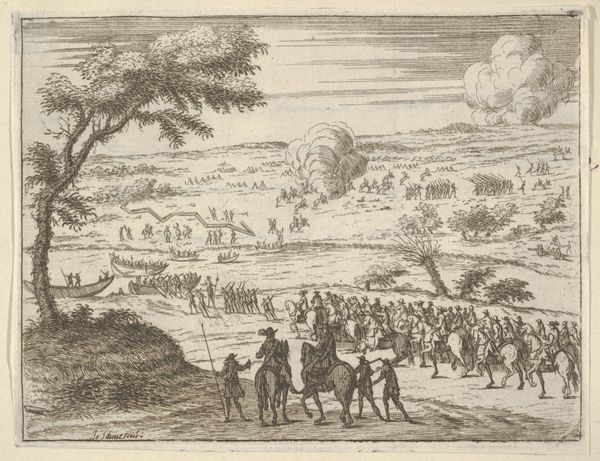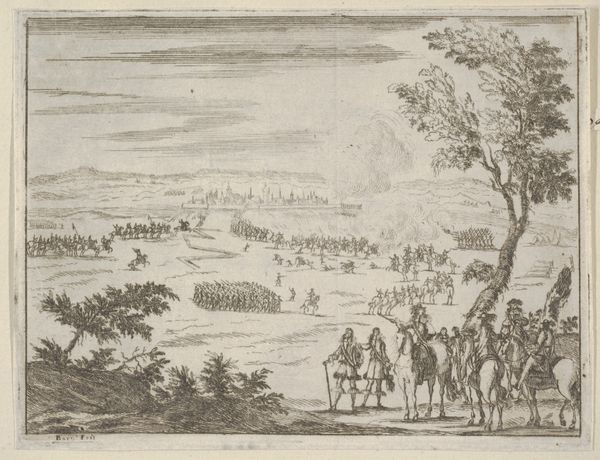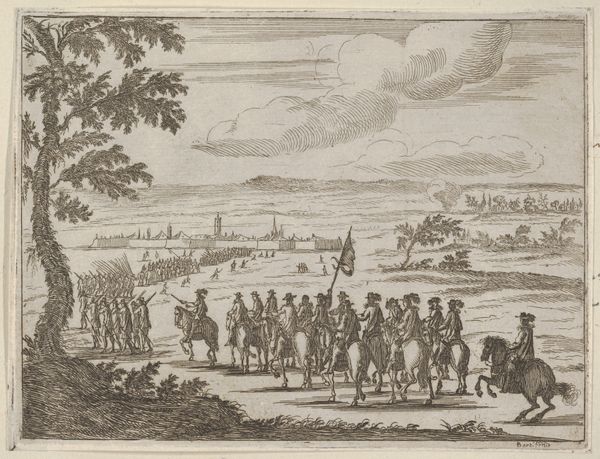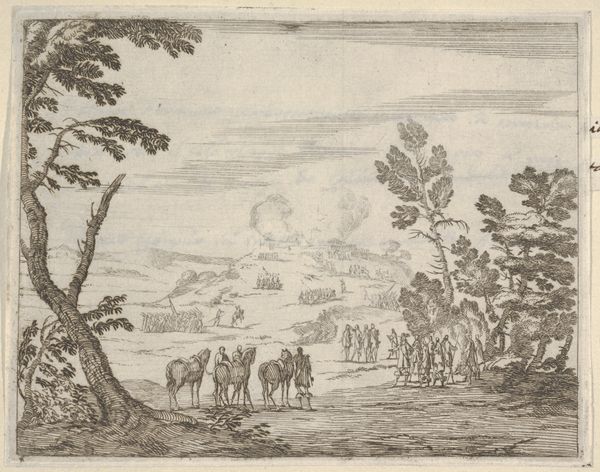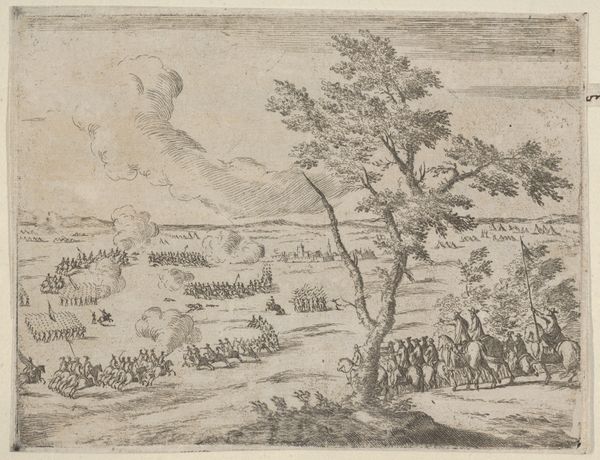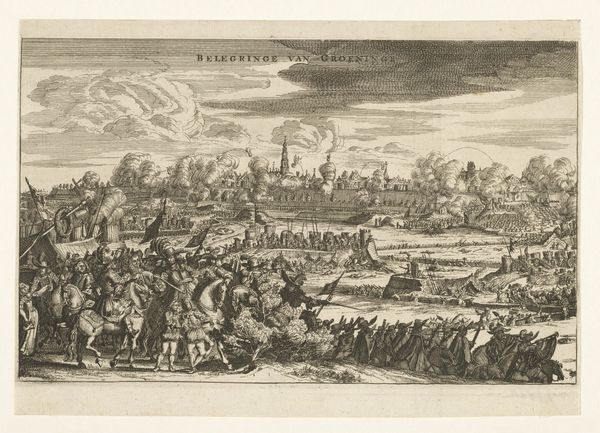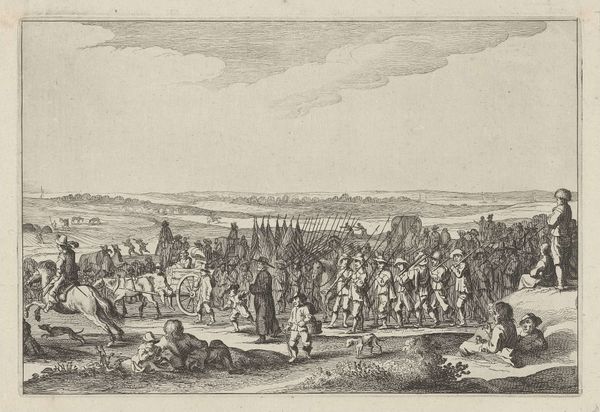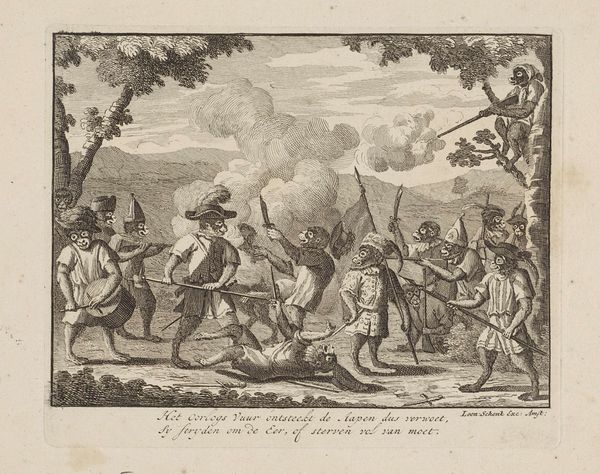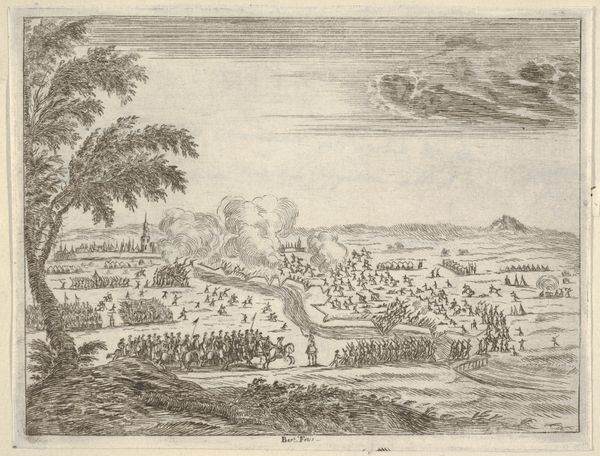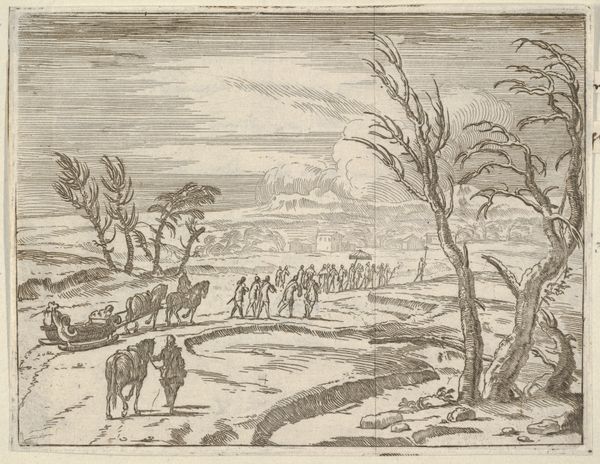![Francesco I d'Este Punishes a Soldier by Death who had Stolen a Chalice from the Holy Church, from L'Idea di un Principe ed Eroe Cristiano in Francesco I d'Este, di Modena e Reggio Duca VIII [...] by Bartolomeo Fenice (Fénis)](/_next/image?url=https%3A%2F%2Fd2w8kbdekdi1gv.cloudfront.net%2FeyJidWNrZXQiOiAiYXJ0ZXJhLWltYWdlcy1idWNrZXQiLCAia2V5IjogImFydHdvcmtzLzZkZWZjOWJmLTc4MDAtNDBhMS05ZDAzLWJjNjU0ZDkyYTgxZS82ZGVmYzliZi03ODAwLTQwYTEtOWQwMy1iYzY1NGQ5MmE4MWVfZnVsbC5qcGciLCAiZWRpdHMiOiB7InJlc2l6ZSI6IHsid2lkdGgiOiAxOTIwLCAiaGVpZ2h0IjogMTkyMCwgImZpdCI6ICJpbnNpZGUifX19&w=3840&q=75)
Francesco I d'Este Punishes a Soldier by Death who had Stolen a Chalice from the Holy Church, from L'Idea di un Principe ed Eroe Cristiano in Francesco I d'Este, di Modena e Reggio Duca VIII [...] 1659
0:00
0:00
drawing, print, etching, engraving
#
drawing
#
baroque
# print
#
etching
#
landscape
#
figuration
#
soldier
#
horse
#
history-painting
#
engraving
Dimensions: Sheet: 4 15/16 × 6 3/8 in. (12.5 × 16.2 cm) Plate: 4 3/4 × 6 1/4 in. (12.1 × 15.9 cm)
Copyright: Public Domain
This engraving illustrates Francesco I d'Este’s severe justice, depicting the execution of a soldier who stole from a church. The chalice, though not visible, is the central object, symbolizing sacred trust and its violation. Consider how objects such as the chalice become culturally loaded symbols. The chalice, deeply rooted in religious ritual, transcends its material form, embodying faith and communal sanctity. Its theft is not merely a crime but a sacrilege, echoing in the collective memory through countless artistic and literary representations. Think of the Last Supper, where the chalice signified covenant; now, it marks betrayal and moral decay. This transformation reveals the symbol's power to evoke complex emotional states, engaging viewers on a subconscious level with primal fears of sacrilege and societal breakdown. The enduring presence of such symbols in art reveals a cyclical pattern, where ancient motifs resurface, adapting to new contexts while retaining their capacity to provoke deep emotional responses, demonstrating how cultural memory shapes our perception and emotional experience.
Comments
No comments
Be the first to comment and join the conversation on the ultimate creative platform.
